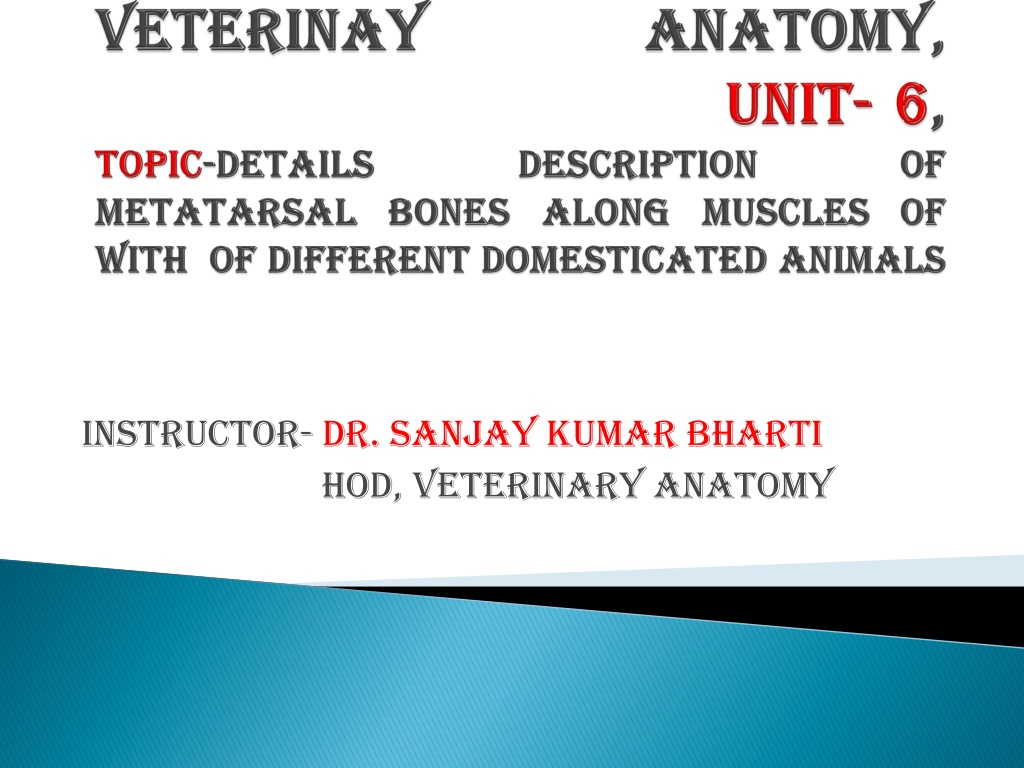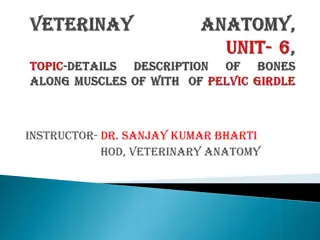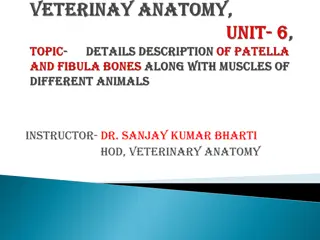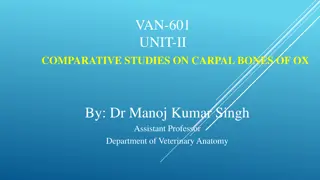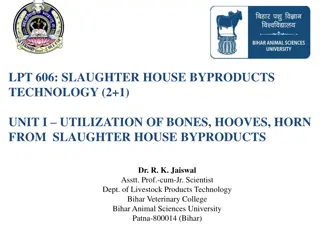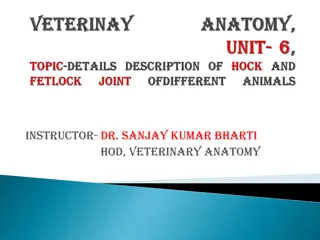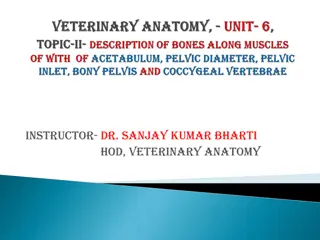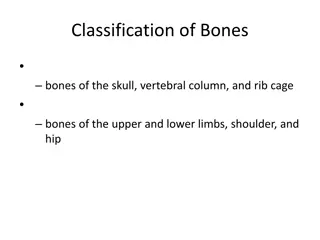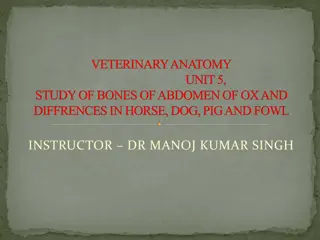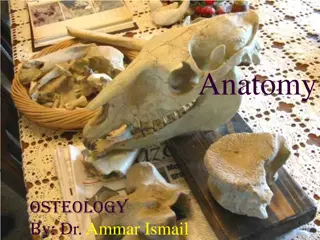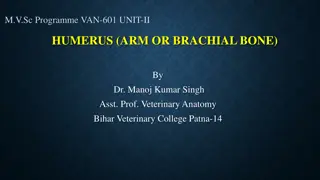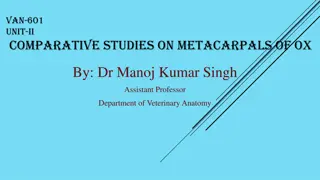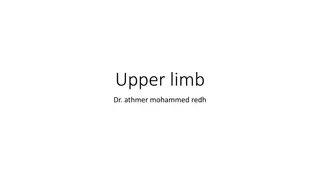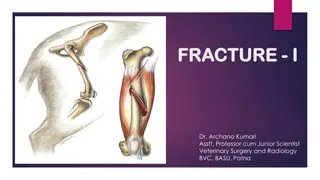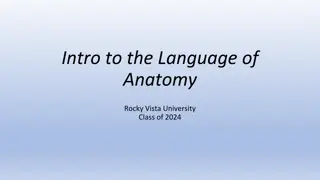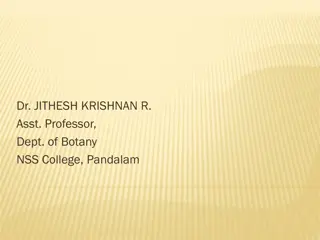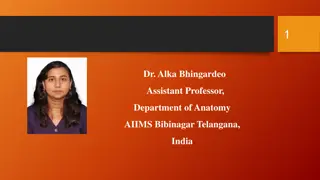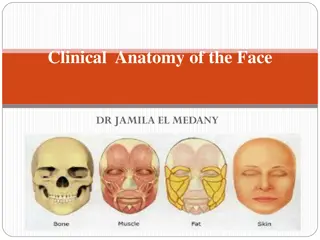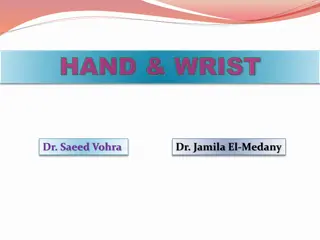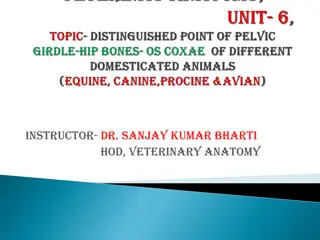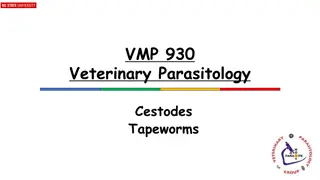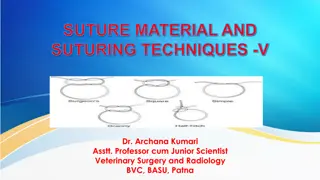Veterinary Anatomy of Ox Metatarsus Bones
The metatarsus bones of an ox consist of fusion of large and small metatarsal bones. The large metatarsal bone has distinct features at its proximal and distal extremities, while the small metatarsal is disc-shaped and located at the postero-medial aspect. The ox also has three metatarsal bones, one large and two small, resembling the metacarpal bones. Understanding the anatomy of these bones is essential for veterinary studies.
Download Presentation

Please find below an Image/Link to download the presentation.
The content on the website is provided AS IS for your information and personal use only. It may not be sold, licensed, or shared on other websites without obtaining consent from the author. Download presentation by click this link. If you encounter any issues during the download, it is possible that the publisher has removed the file from their server.
E N D
Presentation Transcript
Instructor- DR. SANJAY KUMAR BHARTI HOD, VETERINARY ANATOMY
Ox -The metatarsus has fusion two bones -the large (third and fourth) and the medial small (second) metatarsal bones. Large metatarsal bone (third and fourth) -Long bone, ODV in Position, In between Hock Joint- Fetlock Joint, Having 2 Extremities and a Shaft. It resembles with large metacarpal except for the following differences The bone is longer than metacarpal. The proximal extremity presents a flattened facet laterally for the fused central and 4th tarsal and a large facet on the medial aspect for the fused 2nd and third tarsal behind which is another small facet for the first tarsal. At its postero medial aspect, this extremity presents a facet for the small metatarsal bone
Proximal Extremity- The dorso-medial aspect presents a tuberosity for the attachment of the tendon of the peroneus tertius. The Shaft is four sided- Having- dorsal metatarsal groove i.e deeper Plantar face/ Posteriorly presents a shallow groove. Commencing at the upper part of the groove is a vascular tunnel passing obliquely upward and forward through the proximal extremity to open on the articular face of the extremity behind and between the facets. The Distal extremity resembles that of the large metacarpal. Having- Distal foramen, Two Condyles (Medial & Lateral) Ridge & Intercondyloid cleft.
Medial small metatarsal disc shaped The of bone situated at postero-medial aspect of the proximal extremity of the large metatarsal bone. medial small metatarsal is piece It presents small facet on its dorsal face for the large metatarsal. The rest of the bone is rough.
It has three metatarsal -one large-3rd (third) and two small (second and fourth) medial and lateral metatarsals (SPLINT BONE) . The large metatarsal resembles the large metacarpal. The vertical groove presents in the ox are absent. The proximal extremity presents facets for the third tarsal, the fourth tarsal and sometimes the second tarsal. The shaft is cylindrical. The small metatarsals, each has two small facets in front for the large metatarsal.
The lateral (fourth) metatarsal is relatively massive, especially in its upper part. The proximal extremity is large and outstanding and bears one facet above for the fourth tarsal. The medial bone (second metatarsal) is much more slender than the lateral especially in its proximal part, which bears two facets above for the first the second tarsal and sometimes one for the third tarsal
The tarso-metatarsus is a single bone formed by the fusion of the distal row the tarsals with the second, third and fourth metatarsals. The proximal extremity presents two glenoid cavities for the distal end of the tibio-tarsus. The shaft is two-sided. The first metatarsal is attached by ligament to the postero- medial border of the large metatarsus. In the male, a conical projection arises from the medial aspect of the body of the metatarsus and serves as a core for the horny spur or calcar.
The distal extremity divides into three processes. Each process is in the form of an articular convexity. The medial one is the shortest and articulates with the second digit. The middle one is the longest and articulates with the third-digit. The lateral one articulates with the fourth digit.
